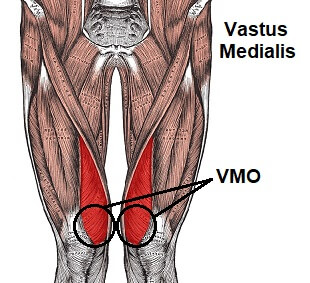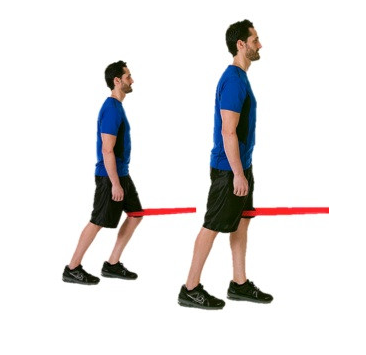Our knees cop a hiding. They carry us through life, every step, squat, run, jump and dance move, yet most of us barely think about them until something starts to ache.
By your thirties, you might notice it: that dull throb when the weather changes, a bit of morning stiffness, or hesitation before crouching down. It’s your body’s polite way of saying, “Hey, maybe we should start looking after these hinges!”
It’s not just athletes or tradies who end up with cranky knees. Weight gain, autoimmune conditions and even genetics can fast-track wear and tear. But honestly, it’s no surprise they complain, every single step you take puts around 1.5 times your body weight through your knees. No wonder knee pain is right up there with back pain as one of the most common grumbles as we age.
The knee “is a simple joint, it only does one this but is part of every single movement we do and carries the entire body”. It’s built to take load, twist (a little), absorb shock, and stabilise us, but it needs a strong support crew above and below.
That crew? Your hamstrings, glutes, quads and calves. When they’re firing well together, the knee stays stable and happy. When they’re weak or out of sync, all that stress lands on the joint itself, and that’s when the pain can kick in.
The good news? We can do a lot to protect them. Research shows that strengthening the muscles around the knee helps prevent cartilage breakdown, delaying or even avoiding osteoarthritis and joint replacements. For those already in the early stages, it can ease pain and improve function.
And it’s not just about muscles. Movement actually feeds your knees. Inside each one is synovial fluid, think of it as your knee’s motor oil. Exercise boosts its production, keeping things lubricated, reducing stiffness and inflammation, and helping cartilage stay healthy.
Even your bones benefit. Weight-bearing and strength exercises help reduce bone thinning (osteoporosis), and the improved muscle control lowers your risk of falls. Bonus: strengthening your knees also improves proprioception, that subconscious awareness of where your body is in space. It’s like upgrading your body’s internal GPS.
Doing knee exercises help “get your mind to connect to your knee,” reducing the risk of falls and improving balance.
And it’s never too early to start. While the research often focuses on older adults, studies on young athletes show that early knee strengthening can dramatically reduce injury risk.
For the rest of us, I recommend you get started in your thirties, the same decade we start to lose muscle mass and bone density. Fifteen minutes, three to four times a week, is all it takes. You don’t need fancy equipment, just some space, a bit of consistency, and maybe some guidance from a coach to nail your form. I love bands for knees.
Here are five great knee-friendly exercises you can do at home:
1. Step-Ups
All you need is a step or stair. Step up and down, alternating legs. It’s low impact and strengthens your hamstrings and quads, the front-thigh powerhouses that help protect your kneecap from rubbing and clicking. Vary the height and the added weight you carry to make it more difficult. Changing the tempo will also help challenge you, step up quick step down (eccentric phase) slowly.
2. Squats
Bodyweight squats are gold. They work your quads, glutes and balance all in one go. Try doing a few every morning and night or 15 every half hour if you’re glued to a desk. They can improve bone density, stability and overall strength.
Go easy on deep squats, though, if you’re not confident with your form, stay above 90 degrees and check in with a professional.
3. Straight Leg Raises
Lie on your back with one knee bent and the other straight. Lift the straight leg a few inches off the floor, hold, then lower. It’s simple but powerful for quad strength and knee stability. Lock out that knee one the way up and down to engage the VMO. See image below. This is a big playing in knee stability and control.

4. Calf Raises
Stand tall, feet shoulder-width apart, and lift your heels slowly so you’re up on your toes, then lower back down. These build the calf muscles that help balance knee load and reduce strain. The calves cross over the knee joint at the back so play another role in stabilising the knee joint.
5. Banded knee extension
Attach a band to a study upright that isn’t going anywhere. Attach the other end to behind your knee. Walk backwards until the band is under decent tension, with enough ‘play’ that you can straighten your knee, just! Repeat the slight bend and straightening of the knee squeezing that VMO again, see above image, and below image for full exercise explanation.

A few tips:
- Start with two sets of 10 reps for each exercise.
- Focus on controlled movement, not speed.
- Mild muscle soreness is normal; joint pain isn’t, if it hurts, get it checked.
- As you get stronger, you can add light weights or a vest, but bodyweight alone is plenty for most people.
The truth is, knee care is an investment, one that pays off every time you move with ease, chase your kids, or step out for a run without wincing. Our knees don’t ask for much, just a bit of consistent love and maintenance.
Or, as Baz Luhrmann put it:
“Be kind to your knees. You’ll miss them when they’re gone.”
Need more help with stiff joints, problem areas or just a general tune up before Chistmas. A couple of spaces left in my calendar if you want one – book a chat to confirm.
